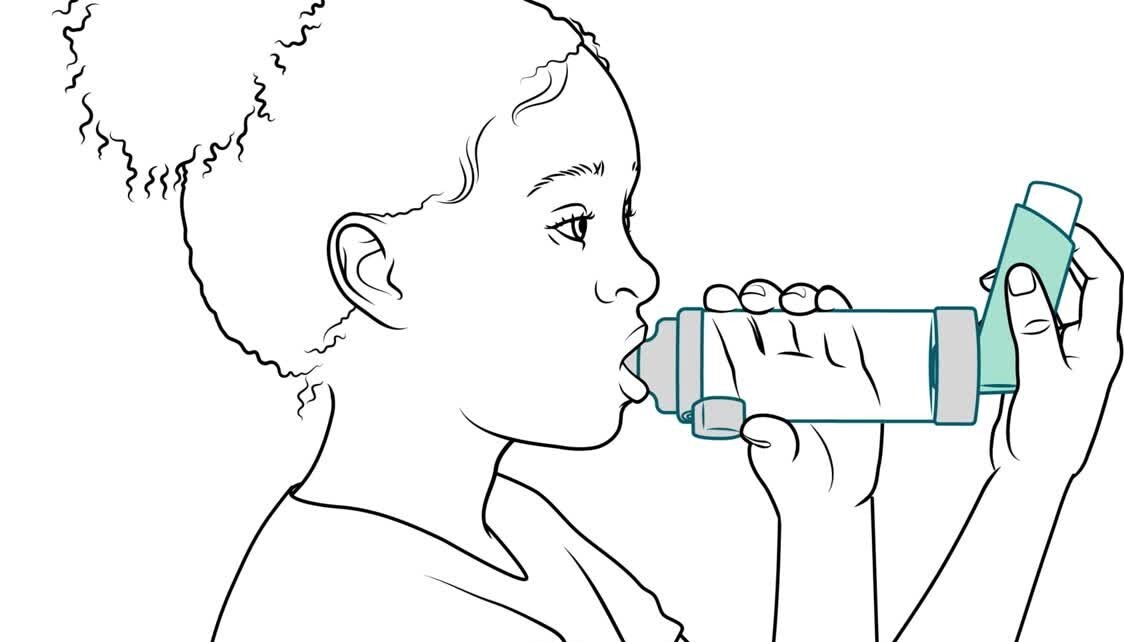Asthma is a long-term condition that affects the lungs and airways. When exposed to a trigger the airways narrow making it more difficult to breathe. The narrowing of the airways is caused by 3 factors: inflammation, mucus and airway muscle constriction.
Asthma can affect people of all ages and can usually be managed through treatment such as medication use e.g. reliever inhalers and preventer/controller medications and a healthy lifestyle.
Did you now that around 1 in 9 Aussies have asthma? With all the asthma medications available including asthma preventers and asthma relievers, why is asthma still the 4th highest chronic condition that Aussies take time off for? The reason lies with the way these medications are administered. Asthma inhalers aren’t the easiest medications to use but it is extremely important to do it right.
4 Common Asthma Symptoms
Asthma is diagnosed by your doctor by taking some breathing tests. If you experience shortness of breath, wheeze, chest tightness and/or have a dry irritating and continual cough especially at night, speak to your doctor. Whilst you might feel these symptoms may individually not be a concern, they can also be a sign of asthma as well as some other medical conditions.
What Causes Asthma?
The fundamental causes of asthma are not completely understood. The strongest risk factors for developing asthma are a combination of genetic disposition with environmental exposure to inhaled substances and particles that may provoke allergic reactions or irritate the airways. Asthma triggers can include:
- viral respiratory infections
- allergens (indoor or outdoor)
- tobacco smoke and air pollution
- chemical irritants, including in the workplace.
- strong odours, such as perfume.
Other triggers can include cold air, change in temperature, thunderstorms, extreme emotional arousal such as anger or fear, hormonal changes, pregnancy and physical exercise. Certain medications can also trigger asthma such as aspirin and other non-steroid anti-inflammatory drugs and beta-blockers (medications used to treat high blood pressure, heart conditions and migraine)
Why Is It Important to Treat Asthma?
Whilst there is no cure at the moment for asthma, there are medications available that can help control asthma and minimise its impact on your daily activities. However, if left untreated or undertreated, the long-term inflammation of the airway can lead to permanent airway damage. According to the Australian bureau of statistics ONLY 1 IN 3 people with asthma have an Asthma Action Plan. If you do not currently have an Asthma Action Plan ask your doctor or friendly Pharmacist today!
The Importance of Proper Inhaler Technique
There are 2 main types of asthma medications: relievers and preventers. It is important to know the different between the two as they both play important roles in asthma treatment.
Relievers: aka “puffer” are available without a prescription, only used to relieve symptoms and not to be used daily long-term.
Preventers: Low dose of “inhaled corticosteroid prescribed by the doctor that reduces airway inflammation that should be used every day long-term.
It is important that you discuss with your doctor and pharmacist the inhaler that suits you best. Once this has been decided, you can ask your pharmacist to show you how to use your inhaler correctly to ensure maximum delivery of the medication to your lungs. There is no embarrassment in asking your pharmacist every month you get a new inhaler to review your inhaler technique.
At Pharmacy 4 Less your health and well-being are our top priorities. Our Pharmacists Recommend using a Spacer with your inhaler to ensure the most effective use of your medication.
If you use your inhaler without a spacer, then most of the medicine ends up inside your mouth or stomach, instead of your lungs, where it works best. The spacer acts as a holding chamber where the medicine sits as a fine mist that you can then breathe in very slowly.
Spacers are used with mouthpieces, or with facemasks for younger children and babies.
Using a spacer

- Put the spacer together following the instructions that came with it.
- Remove the protective cap from the puffer.
- Shake the puffer well and prime it by pressing down a few times until a mist comes out.
- Insert the puffer firmly into the end of the spacer.
- Place the mask over your child's face, making sure that it covers the mouth and nose. Try to get a good seal on the skin so that no air can get in. In older children you may wish to use the mouthpiece on the spacer, rather than the mask.
OR:
If your child is able to use a spacer without a mask, they should place the mouthpiece of the spacer in their mouth and put it between their teeth, then close their lips around the spacer mouthpiece. Make sure their lips cover the entire mouthpiece so there are no gaps. - Ask your child to sit upright and breathe out gently. Hold the spacer and puffer level so that they do not tilt up or hang down.
- Press the puffer once to release a dose of the medicine into the spacer. Do not remove the puffer.
- Allow your child to breathe in and out four times. This usually means leaving the spacer in position for about 15–20 seconds. Do not remove the mask in between each breath – there is a two-way valve system that will prevent any of the medication from escaping from the chamber.
If further puffs are needed, shake the puffer again and repeat steps 4 to 7. You can shake the puffer while it is still attached to the spacer as recommended by the Royal Children’s Hospital.

